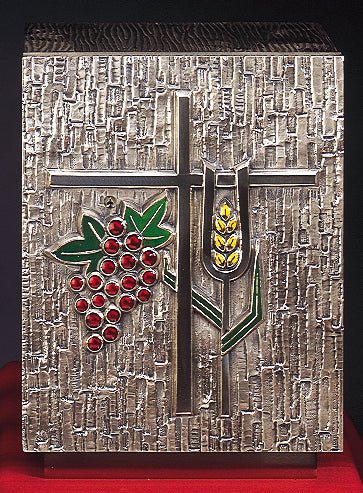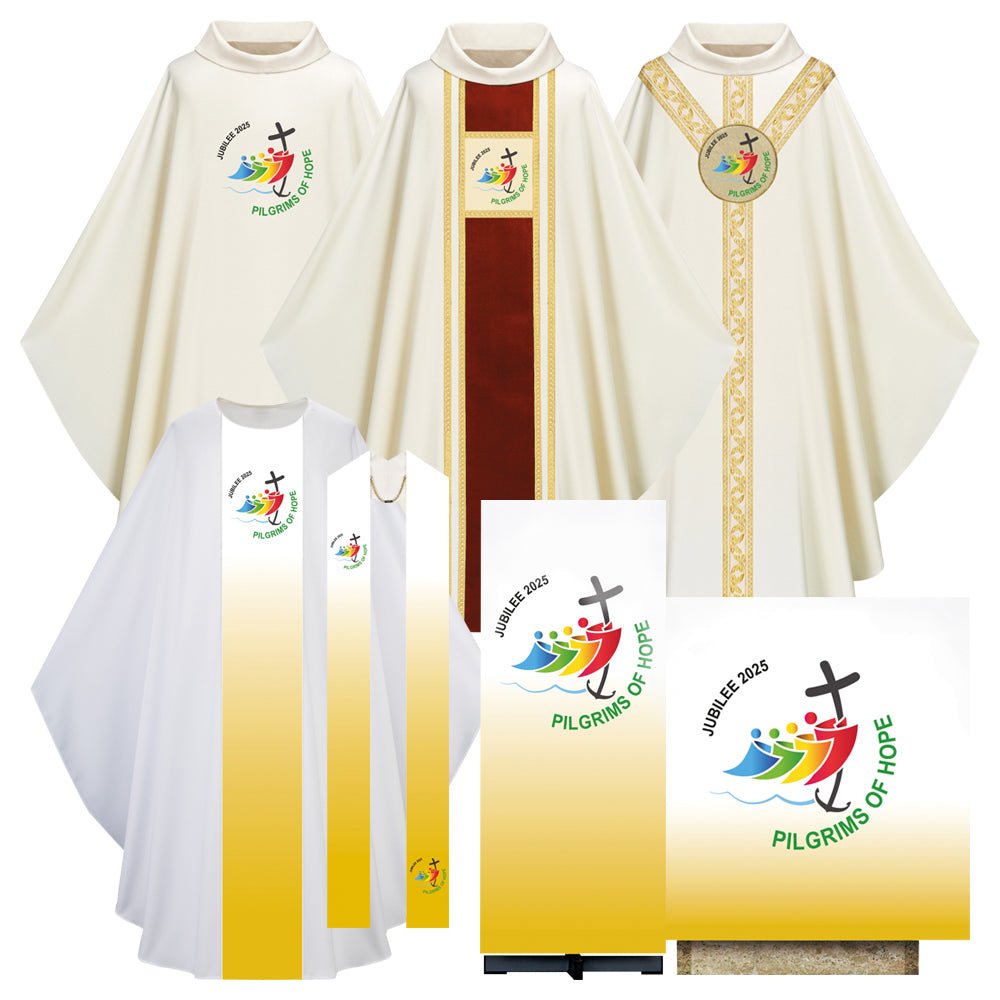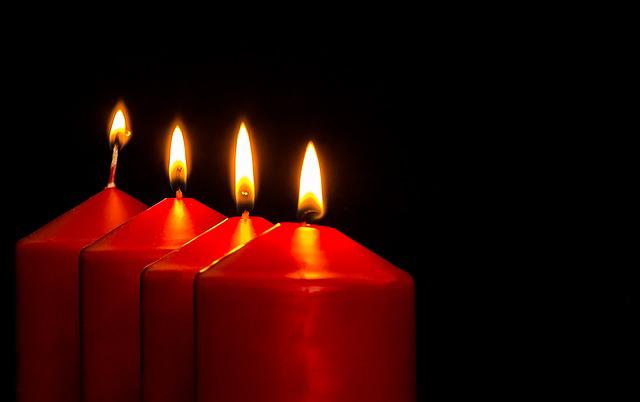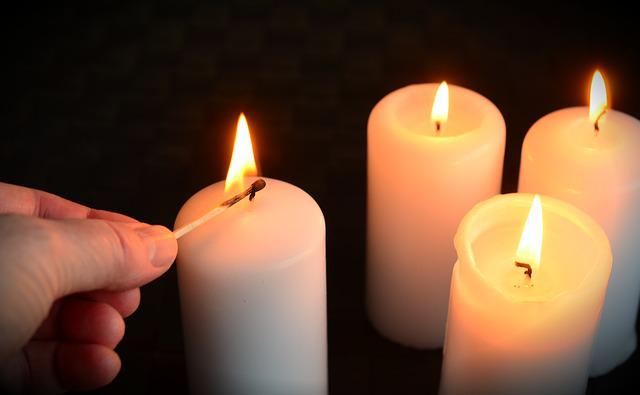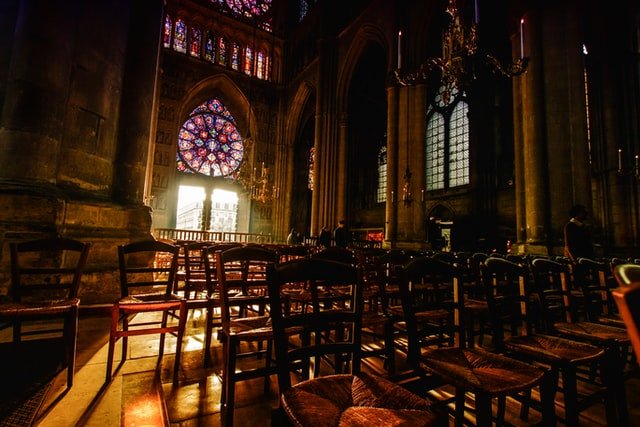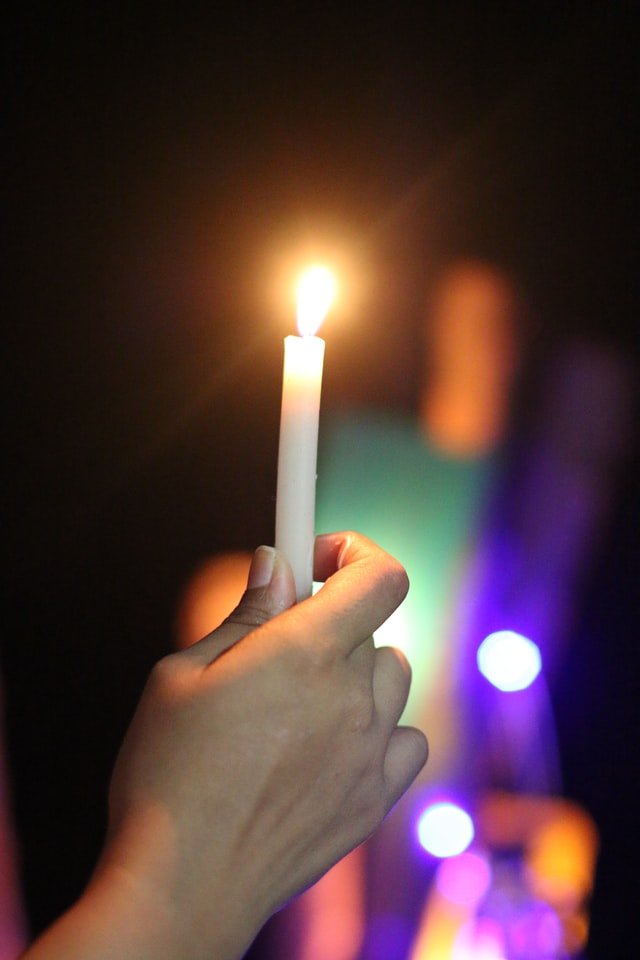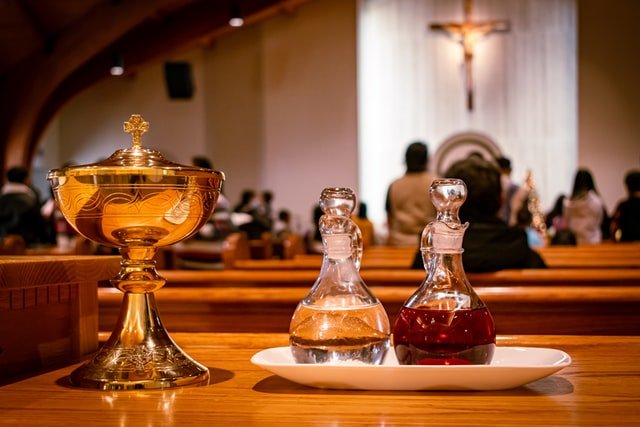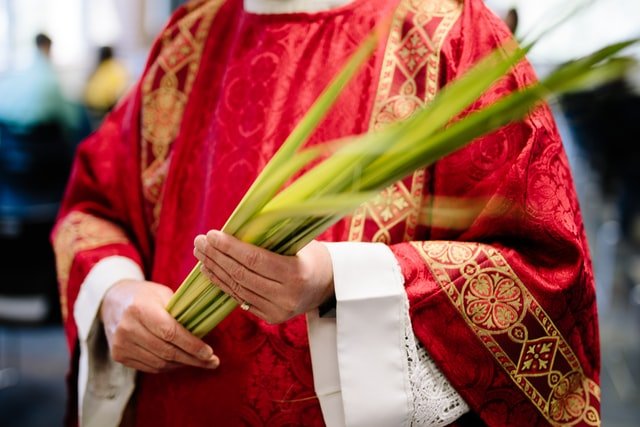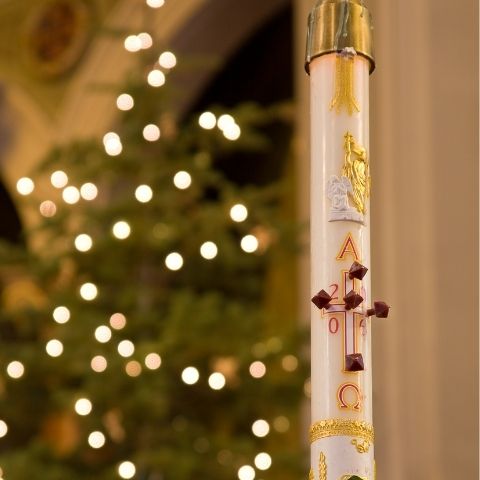Have you ever stared at the Tabernacle, your pulse synchronising with the hush in the air, and wondered if you're doing enough to uphold its sanctity? Ever clasped the Eucharist in your hands, felt its weight, and questioned if you're truly honouring its sacredness?
Yes, it can be a heavy burden. The Eucharist isn't just bread and wine, and the Tabernacle isn't just an ornate box - they're the heart and soul of your church, right?
And maintaining their holiness can feel like trying to keep a candle lit in a thunderstorm.
Now, I bet some nights you lay awake, your mind teetering on the edge of concern. Are we doing enough? Could we do better? But, it's okay.
It's natural to feel a bit overwhelmed. That quiet worry? It's a sign of your dedication, your deep-rooted respect for these holy sacraments. It's what makes you a stellar guardian of your church's sacred heart.
We're about to dive into a treasure trove of insights, knowledge, and practical tips. We're here to demystify the process, to guide you on this journey.
Ready to bolster your faith, to protect and honour the divine within your reach? Let's get started.
Grasping the Gravitas: The Intricacies of the Tabernacle and Eucharist
From the rustic wooden pews to the glow of stained glass windows, your church is more than just bricks and mortar. And within this sacred space, the Tabernacle and Eucharist hold a unique place, don't they? A mystery wrapped in gold and cloth, cradling divine essence within their humble forms.
Let's delve into their origins. The Eucharist, derived from the Greek word 'eucharistia' meaning 'thanksgiving', is the embodiment of Jesus' body and blood. The Tabernacle dates from the ancient times of the Temple in Jerusalem. It's God's earthly dwelling place, just like the Temple once was.
The Tabernacle, taking its name from the Hebrew word 'mishkan' meaning 'dwelling place', shelters the Holy Eucharist. This age-old tradition links us to our spiritual ancestors, reinforcing our faith and devotion.
Suppose you're welcoming a new member to the Church community, someone who's interested but unaware of the significance of the Tabernacle and Eucharist.
You'd explain these sacred elements, their history, and their symbolic importance within the Christian faith, just as you would educate your church community regularly. This continuous learning is integral in maintaining sanctity.
And yet, it's easy for misunderstandings to creep in. Some may see the Tabernacle as merely ornamental, or the Eucharist as simply bread and wine. But you know better. It's not just about what you see, but the reverence and belief stirred within.
"The sanctity of the Tabernacle and Eucharist extends beyond their physical forms, symbolising the living presence of Christ."
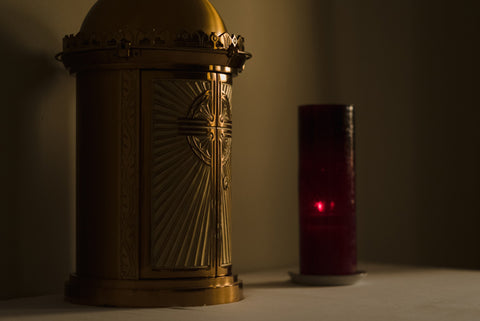
Guarding the Holy Grail: Essential Steps to Preserve Sacredness
Preserving sacred elements might seem hard, but it's often just doing small things that makes the biggest difference. Ever considered the power of your own behaviour in this context? The way you carry yourself, the respect you show, it all counts.
Imagine you’re entrusted with preparing the altar for Sunday Mass. You make sure that the Tabernacle is clean, secure, and veiled appropriately. You make sure the Eucharist is handled with the utmost respect and devotion. These small actions, help preserve the sanctity of these sacred elements.
Cleanliness and attire might sound trivial, but trust me, they matter. Think of them as your suit of armour in this sacred mission, a sign of respect for the divine. And then, there's the liturgical guidelines for handling the Eucharist. They're not just rules on a page, but a code of conduct that echoes our reverence.
The clergy used to show deep respect for the Holy of Holies in the Temple in Jerusalem. We must do the same with the Tabernacle and Eucharist.
"Preserving sanctity is not about grand gestures; it's found in the humble details of reverence and care."

Safeguarding the Supernal: Unveiling Insights on Eucharist Protection
In our quest to safeguard the Eucharist, let's turn our focus to Eucharistic adoration. It's more than a ritual; it's a soulful connection that ties you to the divine. This act of adoration, where you bow before the Eucharist in quiet contemplation, reinforces the sanctity of this sacrament.
Then there's the practice of fasting.
A throwback to our spiritual forebears; it's not an act of denial but a preparation for receiving something sacred. Fasting creates a sense of anticipation, doesn't it? It's like awaiting a cherished guest, preparing a place for them in your heart.
Consider the moment when the congregation is lining up to receive Holy Communion. It's important to educate everyone on the appropriate way to receive the Eucharist, to make sure people treat it with the reverence it deserves. This simple act of instruction aids in safeguarding its sanctity.
And let's not forget the Eucharistic Minister, the one entrusted with the precious duty of sharing the Eucharist. Their demeanour, their actions, they all play a part in safeguarding the Eucharist.
"Each moment of handling the Eucharist is a holy dialogue between God and His people."
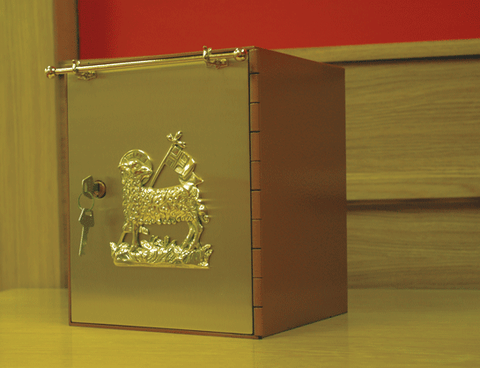
Treasure the Tabernacle: Key Recommendations for its Protection
Now, let's talk about the Tabernacle. Its placement matters, right? It needs to be visible, accessible, a focal point in your church. It's the dwelling place of the divine; it deserves the limelight.
Think of a time when the Church was empty and silent. You'd make sure the Tabernacle is locked, its contents safe, even when no one's around.
What about the Tabernacle veil? More than just a piece of cloth, it's a symbol, a curtain separating the divine from the mundane. It's not just about covering; it's about honouring the sacredness within.
And if you ever need to transport the Tabernacle, that's a whole other ball game, isn't it? It requires care, precision, and above all, respect for the sanctity it embodies.
"The protection of the Tabernacle remains paramount, a continuous testament to our unwavering faith."
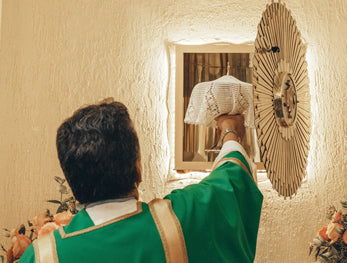
Slaying the Doubts: Tackling Potential Scepticism
Navigating objections is a crucial part of maintaining the sanctity of the Tabernacle and the Eucharist. It's not uncommon for individuals, even within the church community, to question the necessity of such stringent measures. Some may view them as archaic or overly traditional, an echo of a bygone era.
However, it's important to remember - and to articulate to those raising objections - that these safeguards aren't merely about tradition. Instead, they're about preservation and respect for symbols that represent far more than meets the eye.
Consider the Eucharist. On the surface, it may appear as a simple wafer, but its significance is immense. It's a sacred symbol of Christ's sacrifice for humanity, a tangible connection to divine love.
When we take measures to protect and respect the Eucharist, we aren't just adhering to an ancient tradition. We are expressing our recognition of its profound significance, and our commitment to honouring that significance with our actions.
The same applies to the Tabernacle. Its safeguarding isn't a matter of following a dated rule, but rather an act of profound reverence. The Tabernacle houses the Eucharist, making it a continual dwelling place for divine presence.
It's a symbol of God's promise to remain with us always. When we secure it, care for it, and show reverence, we are acknowledging its symbolism and vowing to uphold the promise it represents.
So when objections arise, consider them opportunities for dialogue and education. Explain why these sacred elements of our faith deserve our utmost respect and care. With understanding, even sceptics may come to appreciate the sacred reasons behind reverence.
"Every measure taken, every question answered, serves to uphold the sacred promise we made to guard our symbols of faith."
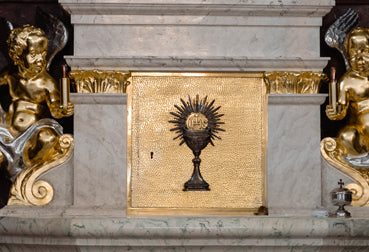
Beyond the Beaten Path: Uncommon Wisdom and Unexpected Guidance
You've heard the term 'holier than thou', right? But regarding safeguarding the sanctity of the Tabernacle and Eucharist, being 'holier' isn't about grand gestures. It's about the purity of your intent, the sincerity of your actions.
Consider your personal devotion. That feeling of warmth that kindles within when you kneel before the Tabernacle; that spark of connection when you hold the Eucharist, they're your secret weapons. Nurture them, let them guide you, and you'll find they make a world of difference.
Imagine you've just finished a long day of administrative tasks. You're exhausted, but before you leave, you stop by the Tabernacle, taking a moment of silent prayer. This personal devotion, this quiet act of reverence, adds another layer of protection to the Tabernacle and Eucharist.
We should treat our tasks of protecting the Tabernacle and Eucharist with the same level of respect as we would the Ark of the Covenant.
At the end of the day, it's not just about safeguarding a tradition. It's about preserving a connection, a thread of faith that weaves through centuries, binding us all in its gentle embrace. And you are an integral part of this beautiful tapestry.
"Our personal devotion to the Tabernacle and Eucharist is our strongest line of defence in preserving their sanctity."
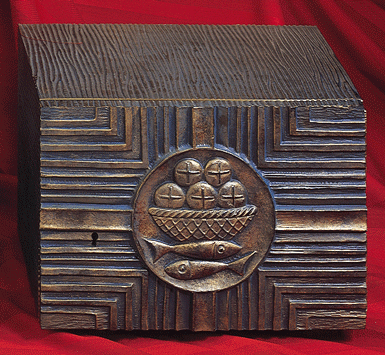
Embracing the Expedition: Protecting the Sanctity of the Divine
We get it. As church administrators, the weight of responsibility on your shoulders can feel monumental. You've got an entire community to shepherd, a spiritual legacy to uphold.
You find yourself pausing before the Tabernacle, awestruck by the gravity of your task. And when the Eucharist rests in your palm, you can't help but wonder if you're honouring its sacred essence to the fullest.
But take a breath. You're not alone. Yours is a shared journey, and each step you take towards preserving the sanctity of these divine symbols? It's a victory, a quiet testament to your dedication.
Remember what we've discussed - the humble basics, the subtle insights, the unexpected nuggets of wisdom. These are more than tips; they're your compass, guiding you through the vast terrain of your sacred duty. And with them, you're more than equipped for the journey ahead.
But let's not forget the most essential piece of this puzzle: your deep-seated devotion. It fuels your journey, your quest to safeguard what's truly priceless. Your respect, your care, your unwavering commitment to honour the Tabernacle and Eucharist? These are the true guardians of their sanctity.
So here's to you, the diligent stewards of faith. As you face challenges and doubts, remember: You're not just protecting symbols. You're creating a legacy of faith and reverence.
So take the leap, shoulder the sacred mantle, and let the world bear witness to your unwavering guardianship of the holy. Armed with knowledge, fortified by faith, you're indeed the beacon of light, guiding your community towards a deeper understanding and appreciation of the divine.
Stand tall, for you aren't just a custodian, but a revered guardian of the sacred heartbeat of your church. On this journey, every step you take echoes through the halls of eternity.

